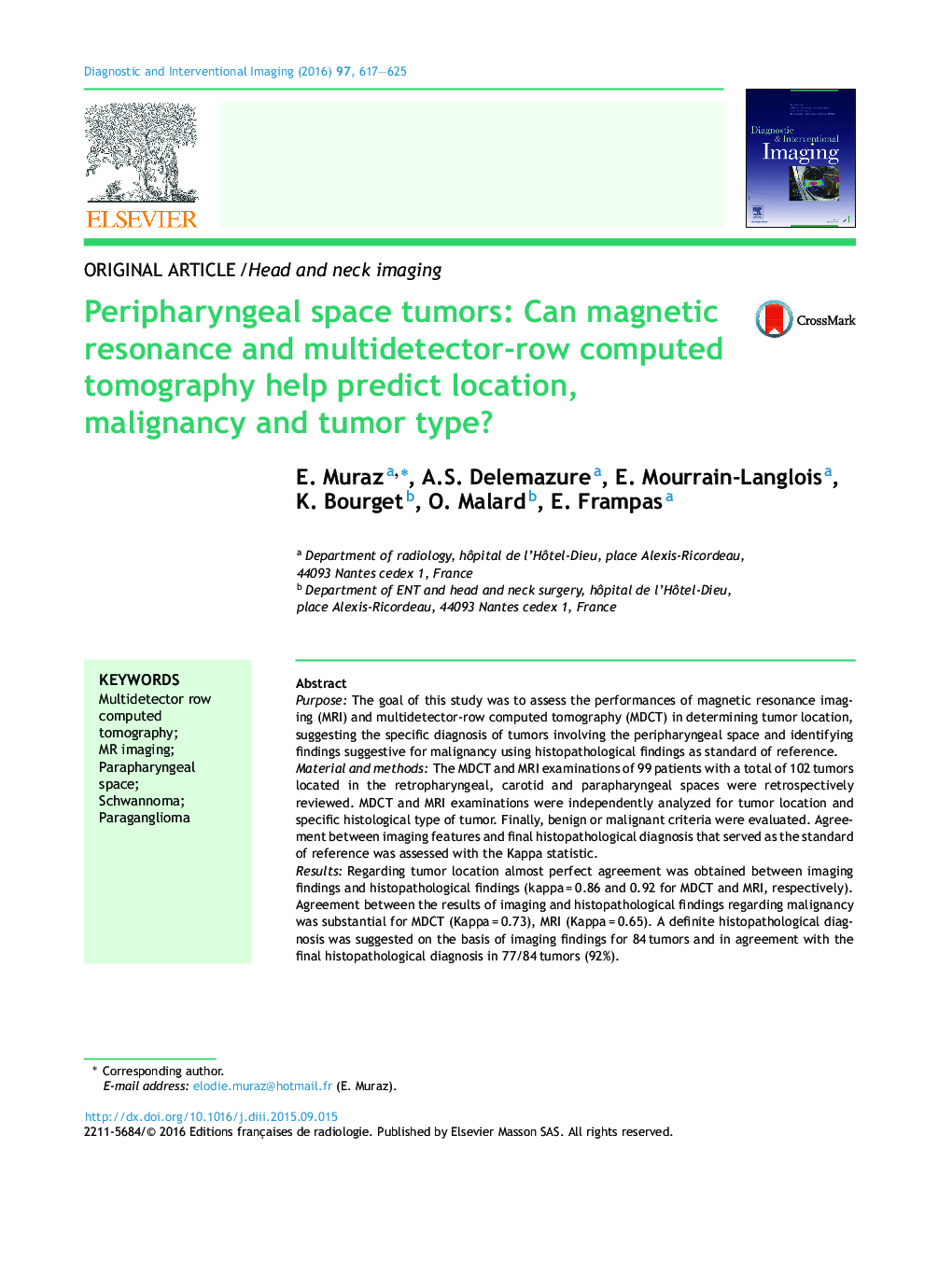| کد مقاله | کد نشریه | سال انتشار | مقاله انگلیسی | نسخه تمام متن |
|---|---|---|---|---|
| 2732637 | 1147520 | 2016 | 9 صفحه PDF | دانلود رایگان |
PurposeThe goal of this study was to assess the performances of magnetic resonance imaging (MRI) and multidetector-row computed tomography (MDCT) in determining tumor location, suggesting the specific diagnosis of tumors involving the peripharyngeal space and identifying findings suggestive for malignancy using histopathological findings as standard of reference.Material and methodsThe MDCT and MRI examinations of 99 patients with a total of 102 tumors located in the retropharyngeal, carotid and parapharyngeal spaces were retrospectively reviewed. MDCT and MRI examinations were independently analyzed for tumor location and specific histological type of tumor. Finally, benign or malignant criteria were evaluated. Agreement between imaging features and final histopathological diagnosis that served as the standard of reference was assessed with the Kappa statistic.ResultsRegarding tumor location almost perfect agreement was obtained between imaging findings and histopathological findings (kappa = 0.86 and 0.92 for MDCT and MRI, respectively). Agreement between the results of imaging and histopathological findings regarding malignancy was substantial for MDCT (Kappa = 0.73), MRI (Kappa = 0.65). A definite histopathological diagnosis was suggested on the basis of imaging findings for 84 tumors and in agreement with the final histopathological diagnosis in 77/84 tumors (92%).ConclusionMDCT and MRI provide accurate information to localize and characterize peripharyngeal tumors. These two examinations provide complementary data to identify imaging criteria that suggest malignancy.
Journal: Diagnostic and Interventional Imaging - Volume 97, Issue 6, June 2016, Pages 617–625
